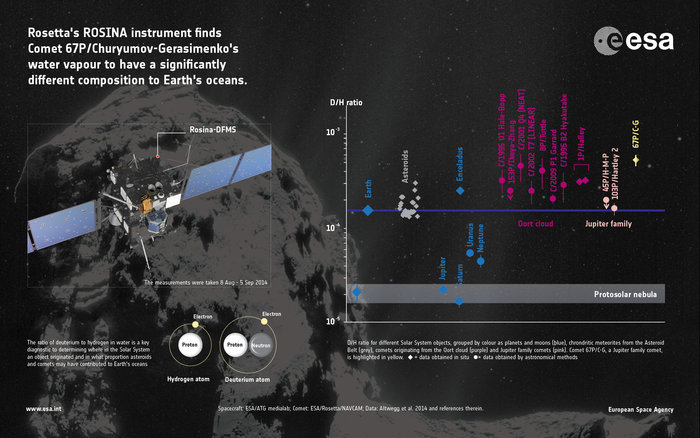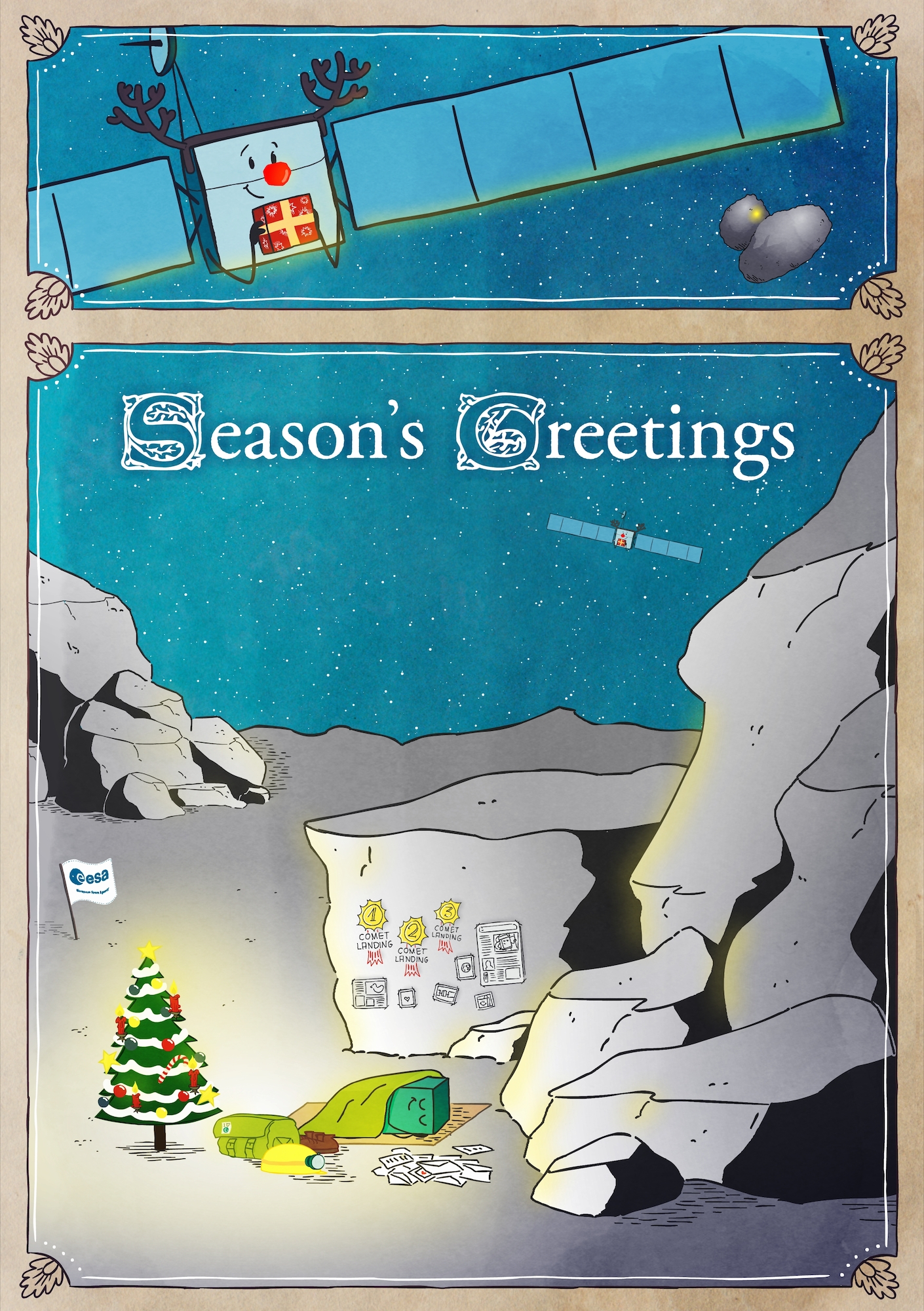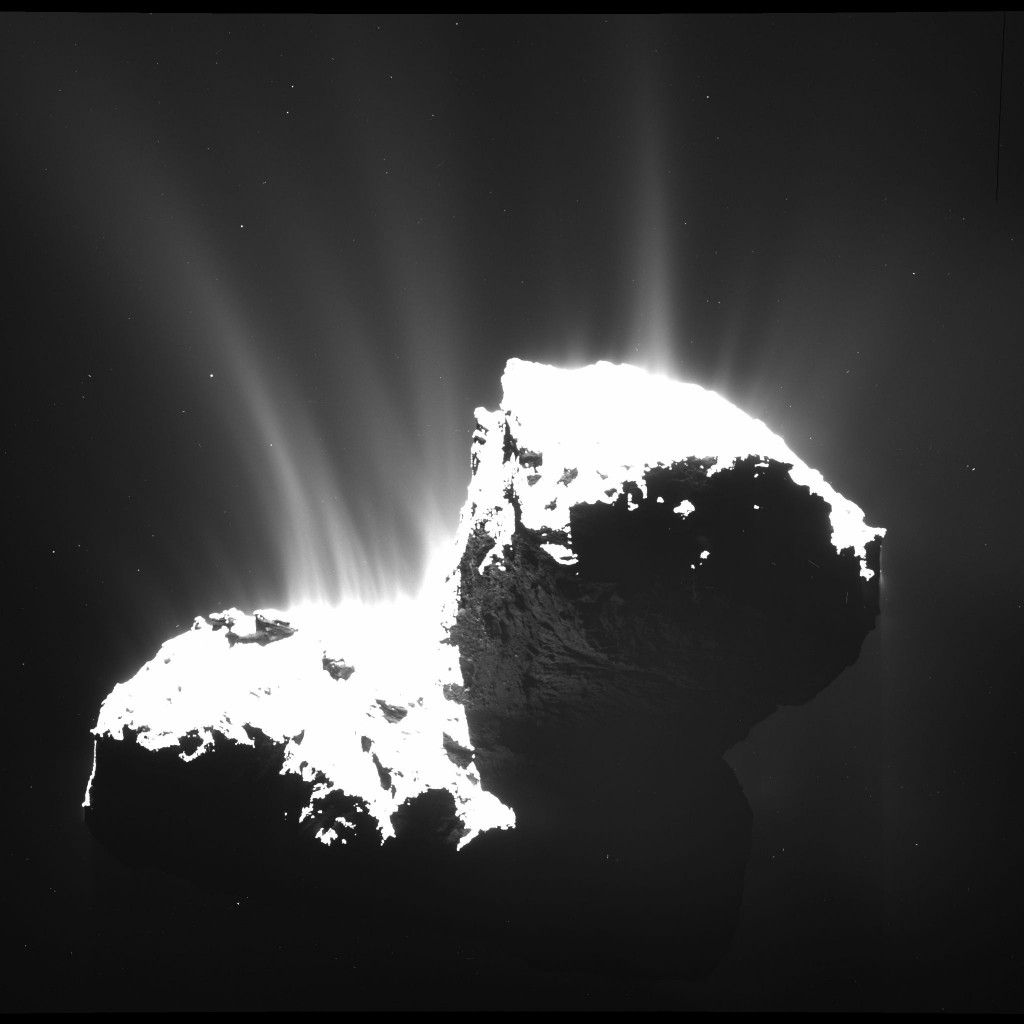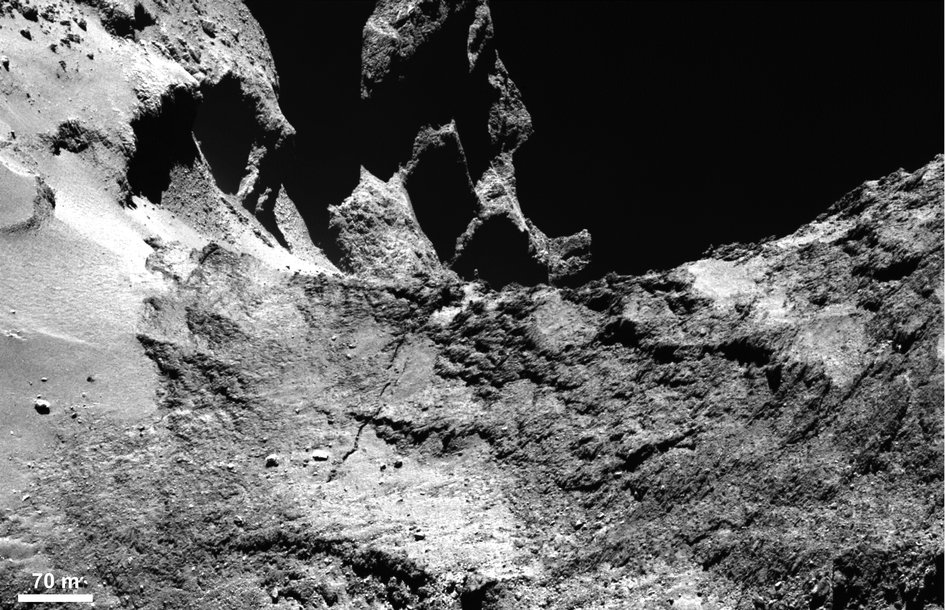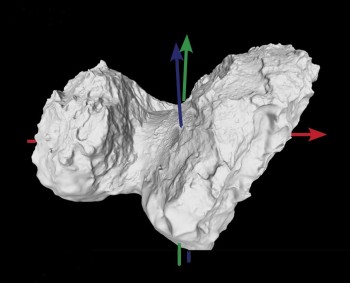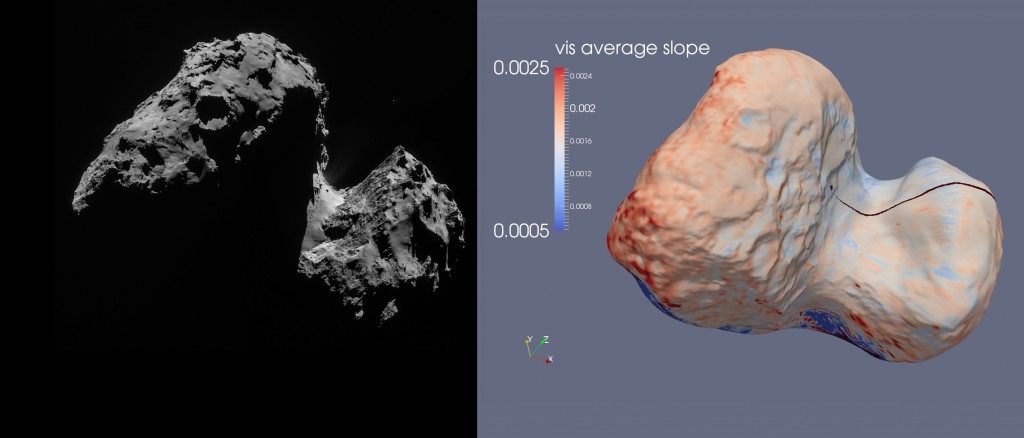Rosetta Data Give Closest-ever Look at a Comet
College of Computer, Mathematical, and Natural Sciences (CMNS) | University of Maryland | 2015 Jan 22
On Nov. 12, 2014, the European Space Agency’s Rosetta mission made history when its Philae lander touched down on the surface of comet 67P/Churyumov-Gerasimenko. While this exciting technical achievement gained lots of headlines, it was only the beginning for researchers back on Earth who are receiving and analyzing comet data. The latest chapter in the story provides the closest and most detailed look at a comet that scientists have ever seen. ...
A First Peek Beneath the Surface of a Comet
University of Massachusetts, Amherst | 2015 Jan 22
In some of the first research findings to be published from the European Space Agency’s Rosetta Mission to the comet 67P/Churyumov-Gerasimenko, scientists including astronomer Peter Schloerb of the University of Massachusetts Amherst report early measurements of the comet’s subsurface temperature and production of gas from the surface of its nucleus. ...
Rosetta data reveals more surprises about comet 67P
Southwest Research Institute | 2015 Jan 22
As the Rosetta spacecraft orbits comet 67P/Churyumov-Gerasimenko, an international team of scientists have discovered that the comet’s atmosphere, or coma, is much less homogenous than expected and comet outgassing varies significantly over time, as reported in a paper published in the Jan. 23, 2015, issue of Science. ...
Getting to Know Rosetta's Comet
European Space Agency | Space Science | Rosetta | 2015 Jan 22
Rosetta is revealing its host comet as having a remarkable array of surface features and with many processes contributing to its activity, painting a complex picture of its evolution. In a special edition of the journal Science, initial results are presented from seven of Rosetta’s 11 science instruments based on measurements made during the approach to and soon after arriving at Comet 67P/Churyumov–Gerasimenko in August 2014. ...
Catching a comet
Science: Special Issue 347(6220) (23 Jan 2015)


